Berkshire Mills: Sandhurst, Sindlesham and Sonning Mills
In their history, these three mills share a commonality, namely an owner, the Over Family. At different times, the Over Family and the company they established, Over Bros., could be found as the owners of one or two of these mills. This is naturally the main subject of the Over Family Collection. It includes information on the formation of the Company, the mills they worked and the family itself. However, it is not the only collection here that tells their story. Brian Eighteen was a local historian and former employee of the company. His collection contains a wide range of material but includes details on Sandhurst Mill, Sindlesham Mill, and Sonning Mill, all mills that the Over Bros. had a connection with. Therefore, utilising both the Over Family and Brian Eighteen Collections, here is the story of the Over family, their company, Over Bros., and the mills they were associated with, Sandhurst, Sindlesham, and Sonning.
The Beginnings: Sandhurst Mill
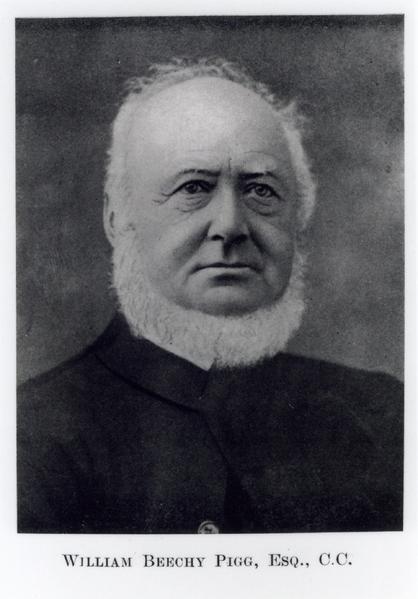
The beginning of the Over Bros. and the Sandhurst Mill story does not start with an Over. Instead it starts with a Pigg, William Beechy Pigg to be precise. He owned a small business that included a grocery, bakery, and, from 1910 onwards, a timber business. An active man who was well-known in the district as ‘an ardent friend of working men’. He only officially handed over his business of ‘Miller, Corn and Timber Merchant’ over to his grandsons, Richard and Frank, in 1912, when he was aged 78. Two years later, when an article appeared about their business in The Miller, he was aged 80 and still active.
It was W.B. Pigg who built Sandhurst Mill, c.1875. Unfortunately it did not have immediate success as the son it was built for died a few years later of illness. It also struggled against the bigger port mills utilising the new roller machinery. So it was that when his grandson, T. R. Over (known as Richard), started working in his grandfather’s business in 1904, aged 17, he found ‘that the mill had for some years discontinued flour milling’ (Over, p.1). Other areas of the business had suffered too, as both the grocery and bakery had shrunk in size. After working in various areas of the company, Richard Over decided that ‘Milling was my Job’. Sandhurst Mill would therefore be put into operation again and Richard Over would run it.
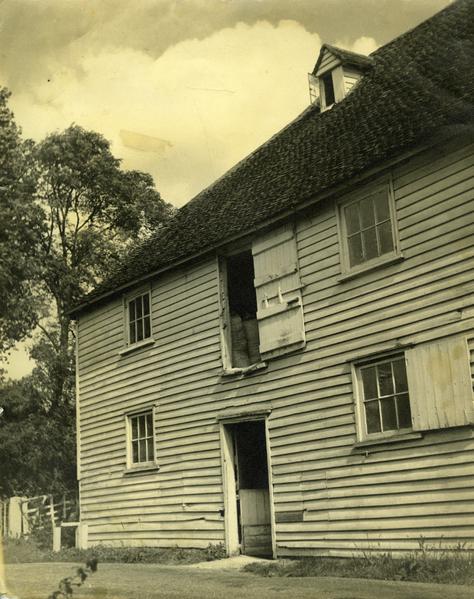
However, despite deciding that ‘Milling was my Job’, it did not mean he had all the knowledge that a miller needed to be successful. He soon found that ‘the chief obstacle was my ignorance of Roller Milling’ (Over, p.1). He soon learnt that given the condition of the mill, he could not simply install rolls to replace stones so had to continue milling with the stones. Given this limitation in machinery, he decided to produce wheatmeal as ‘Millstones could grind wheatmeal’. Unfortunately, in his first attempts he only used soft English wheat in the production of this flour and it ‘produced a loaf nearly as flat as a pancake’ (Over, p.1). The few bakers he had managed to sell samples to were unimpressed and he ‘was told in plain language to take the dud stuff out’ (Over, p.1). After further experimenting and hard work, T.R. Over produced a flour that could make a decent loaf.
In 1908 he was joined by his brother George and the ‘Over Bros.’ company was formed. However, sadly, George died two years later in 1910 ending their partnership. However, this was not the end of the Over Bros. business. When W. B. Pigg handed over his business two years later, it was continued under the name of Over Bros. and two Over brothers continued to run it, Richard and Frank Over. Together they took over the running of the business of ‘Miller, Corn & Timber Merchant’.
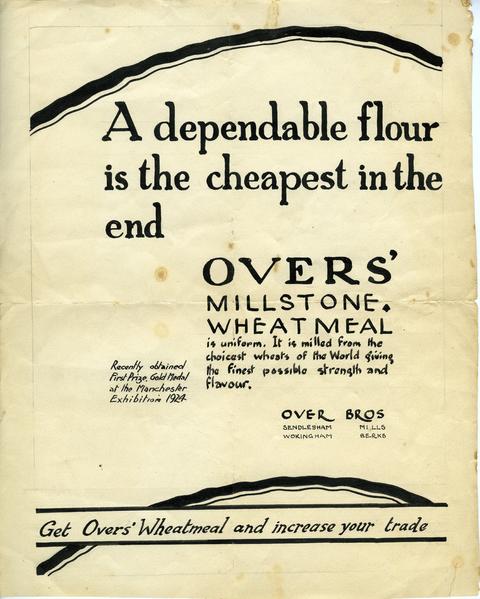
Amidst the sadness and changes the company endured at this time, and there was also some success:
‘The Daily Mail newspaper started an advertising campaign for “Standard Bread”. This was made with an 80% flour which was then rather dark as it had to contain the germ. We soon found that we could produce Standard Flour on our stone plant almost, if not quite equal to larger mills. So we went flat out!’ (Over, p.2)
Unfortunately, this trade was only short-lived as after a few months, people tired of the ‘dry and flavourless’ bread and the demand for white bread grew benefitting the larger roller mills rather than the small, stone-miller.
The need for roller machinery was now evident, however, as Sandhurst was only a small mill, a small plant was all that was required. This was accomplished by the installation of a one sack an hour plant by Tattersalls. However, this did not automatically save their company as knowledge was again lacking: ‘Having only a vague idea of what a suitable wheat blend consisted of, the first flour produced left much to be desired and just would not sell.’ Again, this led to much hard work and focus on improving until ‘After numerous trial runs the flour steadily improved until at the Bakers Exhibition in London we managed to secure a silver medal in a competition open to all mills in the country up to five sacks capacity’ (Over, p.2).
So after much hard work and dedication, Sandhurst Mill was successful and productive under the control of the Over Bros. Company.
The First World War and Sindlesham Mill
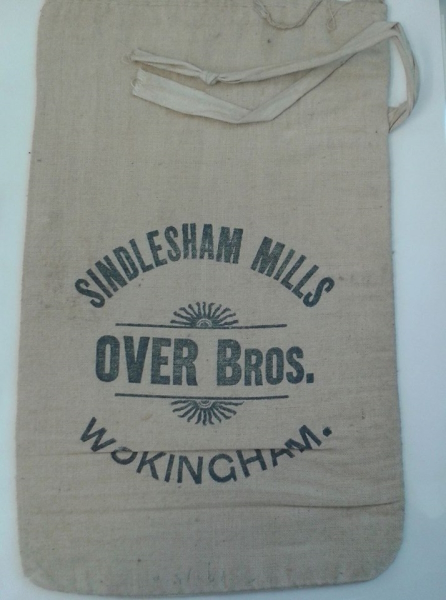
1914 saw initial success and praise for the Over Bros. On 6 April, 1914, an article was published in The Miller about them and their mill at Sandhurst. Whilst the main focus was on the machinery installed by Tattersalls, the article is very complimentary about the Over brothers themselves and their success in the face of big competition:
‘We rejoice at the enterprise and energy of this firm of country millers, who have the courage to defy all outside competition, and, notwithstanding the limited supply of local wheat, are determined to cater for the local trade in flour, and we most cordially wish them every success. Messrs. Over Bros. are two young men full of energy and enthusiasm. They have made up their minds to have some of the best of the flour trade of their district, and have installed machinery that will go a long way towards securing this for them. It is only by installing modern machinery and working it to the best advantage that the country millers can compete with their large port rivals. Messrs. Over seem to thoroughly realise these facts, and are going ahead accordingly.’
So by 1914 things were going relatively well for the company. However, later in the year the First World War broke out, a war which would eventually see all mills come under governmental control and Richard Over join the army. He joined the H.A.C. 309 Siege Battery, whilst the mill was cared for by the miller, Walter Dixon, Ricahrd’s sister, Edith, and a friend, Captain Botting. They kept the mill going but it was becoming clear that the ‘possibilities of developing a flour milling business at Sandhurst were not bright’ (Over, p.2). There were numerous issues with the location, one of which was picked up upon by The Miller, the fact that it was not in a wheat growing district. An alternative mill was therefore sought out.
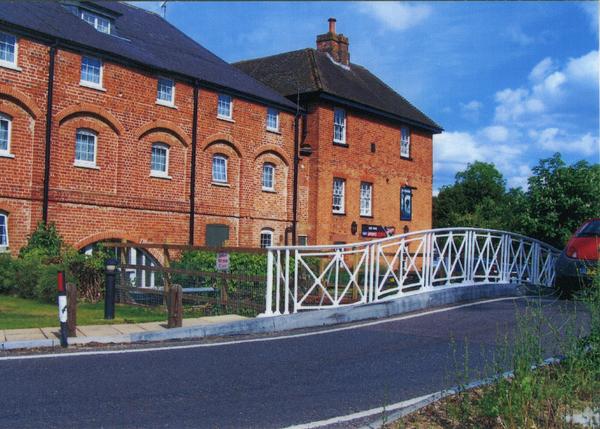
Sindlesham Mill, also located in Berkshire and known to the Over brothers, was run by the Howkins family. ‘One dark night in France’ whilst Richard Over was on sentry duty, he settled on Sindlesham Mill as being the ideal alternative given its location: close to a good market for flour in Reading, in a good wheat growing district and with a 3½ sack plant. He figured out a price in his head but decided that ‘the figure…was so staggering that I promptly dismissed the matter from my mind’ (Over, p.2). However, just as the Over family had gone to war, so did the Howkins family and unlike Richard Over, Lieut. George Addington Howkins did not return home. He was aged 21 when he was killed in action fighting with the 10th Battalion Northumberland Fusiliers. It is unclear whether this death in the family had an impact on Mr. J. T. A. Howkins decision to sell but when Richard Over arrived home in the autumn of 1918, the first thing he opened was a letter ‘from the Sindlesham miller Mr Howkins!!!. He was selling, would I entertain buying?’ (Over, p.3). An agreement was settled on and in 1919, Frank and Richard Over bought Sindlesham Mill for £11,000.
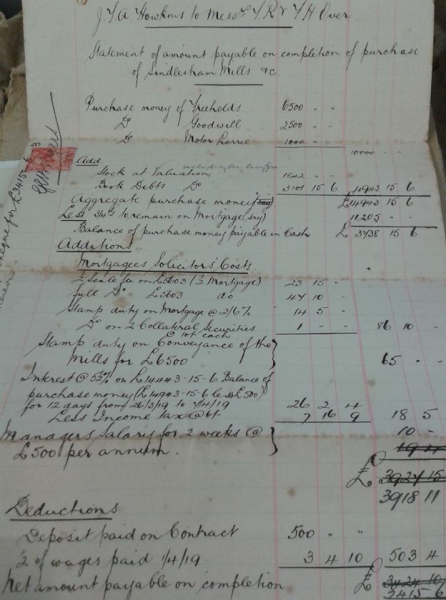
However, soon after selling Sandhurst and moving to Sindlesham, it became clear that ‘the plant was needing an extensive remodel’ (Over, p.3). Three Maxima Mills were installed and meaning they now had a capacity of 4½ sacks! Unfortunately, Mr. Howkins had lost most of his custom during the war so they now had to build up new connections in a new district where they were not known. T. R. Over’s hard work and persistence again led to success for the Over Bros. and after a few years, ‘we gradually got together a fairly good connection and prospects seemed bright’ (Over, p.3). Then the 20’s and the depression hit. Many small mills were forced out of business by bigger companies and indeed, the Over’s ‘found it impossible to make flour milling pay’ (Over, p.3). However, they weathered the storm by expanding into selling animal feed as well as flour and so endured and flourished.
Merger with C. H. Witherington & Son Ltd. and Sonning Mill
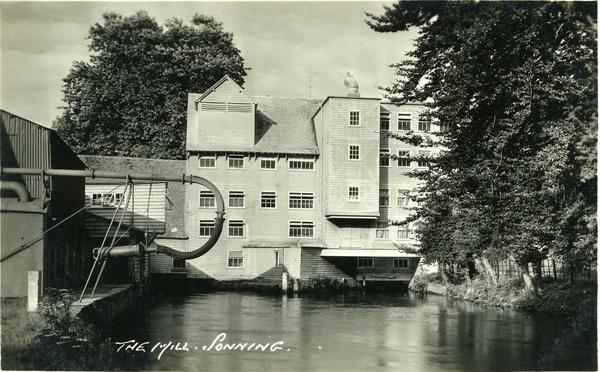
The Over Bros. at Sindlesham Mill continued in this way until the 1950’s when an amalgamation took place with another Berkshire mill and company, Sonning Mill and C. H. Witherington & Sons Ltd. Sonning Mill had been in the possession of the Witherington family since 1894 and it was them who had upgraded the mill to roller milling. In May 1913, the mill then passed into possession of the Phillimore family but they continued to trade under the name, ‘C. H. Witherington & Sons Ltd.’ This mill succeeded on its own under the Phillimore family until 1954 when a merger took place with the Over Bros. and Sindlesham Mill.
Both these firms believed that ‘the interests of all our customers will be better served as a result of this amalgamation, and our ability to give personal service will remain unimpaired.’ This new company became known as Witherington & Over Bros. and they traded together for eight years.
This time also saw the beginning of a new generation of Over’s. Richard’s sons, Raymond and Denis, had joined the company in the 1940s but it was with the amalgamation with Sonning that their impact can be seen. Richard and Denis Over ran Sonning Mill whilst Frank and Raymond ran Sindlesham Mill. The meant that the new generation was ready to take over when Richard and Frank retired in the 1960s. This retirement came after 1962 and the acquisition of Witherington & Over Bros. by Associated British Foods. Raymond and Denis continued to run the two mills until Raymond moved away and Denis was left to look after each mill whilst Brian Eighteen, whose collection much of this information has come from, ran the animal feed business side.
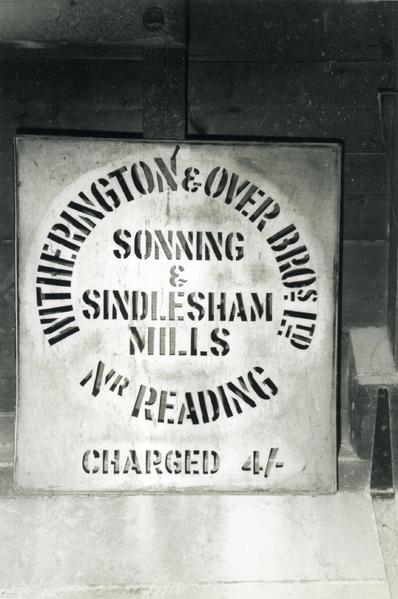
Unfortunately, neither of these mills lasted much longer. Sindlesham Mill stopped work in 1967 whilst Sonning Mill closed in 1969. They have both found new life today though as Sonning Mill is now a theatre whilst Sindlesham Mill has been converted into a hotel.
The Collections
Both these collections are relatively new to the archive as Brian Eighteen’s collection came after his death in 2015, whilst the Over Family Collection was given to the archive by Denis and Raymond Over in 2016. Nevertheless, they are a rich source of information and key part of Berkshire’s local history. In the wider milling sense, they provide the history of one small country miller and business and how it survived many trials and endured through changes in machinery, war, depression, and tough competition. The collections themselves contain histories of the company, written by both T. R. Over and Brian Eighteen, which this article has been based on. Official documents recording mergers, purchases and changes in ownership also helped to piece together their story. Images and postcards, preserved in the Brian Eighteen Collection, add context to the words whilst the physical objects, such as the flour sacks and advertising material, add life and reality to their story. All these items give us a chance to see a snapshot into the past, their lives and business, and allow their history to live on.

Sources:
Brian Eighteen Mill Collection
Over, T. R., Fifty Years of Milling: OVER-007.
The Miller, 6 April, 1914, pp.99-100.
